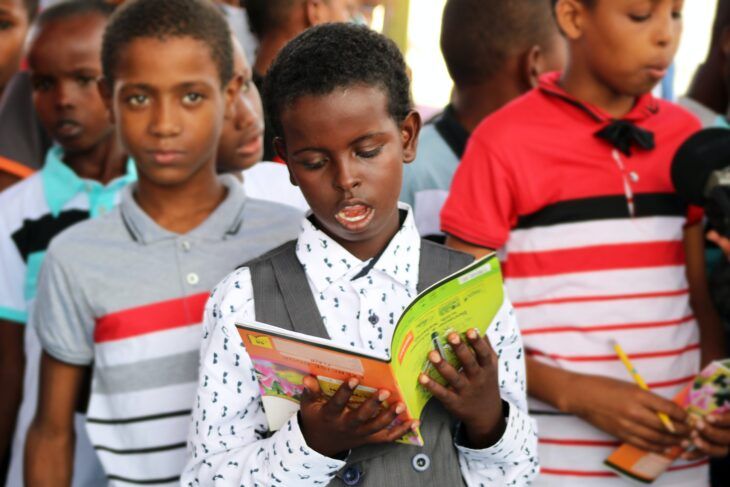Inclusive education

Article 24 of the United Nations Convention on the Rights of Persons with Disabilities (CRPD) says that every person with a disability has the right to “inclusive, quality and free” education on an equal basis with other children, no matter their disability, gender, race and socio-economic and cultural background.
What is inclusive education?
Inclusive education is when all students have the opportunity to have an education in the regular school system.
In an inclusive education system:
- Children with and without disabilities attend the same classes with children their own age at their local school.
- Every student gets the extra, individual support that they may need in a class with their peers with and without disabilities.
- All children have a feeling of belonging in their class and in their community.
- The curriculum (what the children learn) is taught in a way that everyone understands.
- Students are taught to support one another rather than compete against one another.
- Teachers are trained to teach in ways that fits everyone’s learning styles.
- There are smaller class sizes which make sure that the quality of education is good for everyone.
- Children with disabilities are not excluded, integrated, or segregated and feel safe at school.
- The perspective of children with disabilities and their families is valued and listened to.
- Schools are inclusive of everyone and no one gets rejected.
Segregated education leads to segregated lives. When we started to promote Inclusive Education, we learned that it not only benefits children with disabilities, it provided better education for all.
Diane Richler, Catalyst for Inclusive Education
Why is it important?
Students with disabilities who have been included in school:
- are healthier (as inclusion increases, so does health),
- perform better at school,
- enjoy their time at school,
- are more likely to be included and be part of their communities in later life,
- are more likely to have a real job in later life and be independent.
Students without disabilities who attend an inclusive school:
- Also benefit from teachers who understand students learn in different ways,
- Learn how to accept and value one another’s abilities, talents, personalities, and needs,
- Learn how to work with and support others.
What do we hope to achieve?
Accepting children with intellectual disabilities into mainstream schools is not enough.
Real inclusion means education systems are designed to meet the needs of all students. This requires supporting teachers to respond to the individual learning needs of all students.
We demand that every single child is included at school.